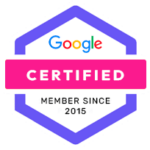Using Copy On Social Networks: Tips, Examples And Our Template

Do you think that having a large community on social networks is a matter of buying followers? Let me tell you something, there are NO magic formulas to suddenly grow in followers, only valuable content can lead to success.
To create quality content, not everything is in the correct spelling; to communicate and connect, you have to go a step further and use good copy.
It is true that the latest trends point to the fact that visual content generates more impact than plain text, it is in any example of copywriting on Instagram (the social network of the moment). But even if this is so, there is only one thing that connects even better; the story format.
And is that each of our stories and publications, both brand and personal, are accompanied by a copywriting work that goes behind, which I want to tell you about in this post.
The Importance Of Copy In Every Publication
Well, in social networks the power of the word is also what will allow you to capture attention and direct your followers towards certain actions.
Initially, as users, we have used social media mainly for personal use, but with its massive evolution, it was to be expected that brands would also echo them to make their stories known. The problem is that users are not satisfied with mere commercial information, they want something more. They even seek to be part of a business with their opinions and suggestions.
Ultimately, interaction with brands has become one more option for enjoyment and entertainment, making copywriting more than necessary.
Potential Benefits Of Copywriting On Social Networks:
- You promote dialogue, making your brand a more human element.
- You can combine emotional formats, such as applying storytelling in infographics.
- You have the possibility to give a specific meaning to the images.
- You can call the action closely.
- You create expectations and generate curiosity about upcoming projects and events.
Tips And Examples To Improve Your Copy On Social Networks
Each brand must know its target audience, must capture a personality and find a unique way to communicate with users on each platform. That is, that content generates a lot of interaction on Facebook, does not mean that it has the same success on Twitter.
However, although each brand has unique characteristics in the way of communicating with the audience in each social network, there are some general tricks to optimize your copy on any social network.
Formats And Layout
Each social network offers you the possibility to layout the content in one way or another. The ideal is to try various contents and see which one catches the most attention from your followers. For example, although there are space limits on Twitter the structure of the copy is always the same.
Example Of Text Structure:
Title + body + CTA (call to action)
Title: This is the first element that will attract the user to read the rest of the content. For them to click, that headline must suggest that the content contains the solution to their problem. For example, I like to accompany each post with an image with a headline that engages or leads to reflection.
Body: It must meet the expectations that the owner has raised. And it is necessary to express in a clear and ordered way all the valuable information that the user will be able to find when they click on the link. Here the arrows and symbols can help you a lot to structure ideas.
CTA: If your goal with copy on social networks is, for example, that they read one of your latest articles, you must include the link clearly visible (remember that on Instagram you should be even more creative, since we only have the link of the bio, which you should do smart with tools like Linktree ).
In short, whether on Twitter or any other social network, my advice is to always work to highlight the most important thing. That is, the product or theme that you defend, and make clear why.
Style And Tone
It is recommended that, despite being clear that structuring your posts with bullets and benefits can work very well, using the right tone, you can also create expectations and get very good results from your publishers on social networks.
Use Of Emojis
Emojis are resources that generally work very well when combined with a good story, as they are fun, cool, and visually easy to read. See how they make a difference in these two examples:
However, although they can have a very positive effect, the use of emojis does not fit in all types of businesses. Therefore, I recommend that you test if the emojis really fit the tone you use and the tastes of your audience.
Although visual content is a trend in content marketing for this year because it generates more interactions, the real responsible for creating a brand that excites, with its own personality, is copywriting. So … why not combine the two things to get the most out of your social networks?
I hope that all these copy tips have helped you to better connect with your social community, because that will mean that you will be closer to achieving your business objectives. But that’s just a start…
You have to organize yourself and that’s why below given are the 5 reasons why a social media content calendar is important to business.
A survey by the Content Marketing Institute found that a whopping 70 percent of B2B marketing experts plan to do more content compared to the previous year.
With such an anticipated increase, it is now more than ever important to have a social media content calendar to support your social media marketing plan.
Organize Content
Social media content calendars help keep your publishing schedule in order. I know, I know. It’s obvious, right? But you would be surprised to know, despite this obvious benefit, the number of brands that do not use a content calendar.
Being organized not only means remembering important dates, it also means knowing what you are publishing, where and when. Don’t underestimate the impact this type of planning can have on the efficiency of your social media marketing plan.
In addition, calendar content helps you establish a regular cadence for each of your social channels and stick to it.
Furthermore, of course, any social media manager who deserves respect knows that consistency is paramount. A content calendar can help ensure that you don’t risk spamming one network while leaving another.
Collaborate With Ease
Another great aspect of social media content calendars? They make teamwork easier. It doesn’t matter if you share information with a shareholder or update your team, this calendar serves as the only source of truth as to what has been published and when.
This is made easier when you host your calendar on a cloud platform designed to promote collaboration, such as Google Sheets or an Excel spreadsheet in Dropbox.
Save Time
The inherent organization of content calendars promotes efficiency. Planning ahead for content, knowing when you will publish new resources, when you will release new content and when you will organize elements from other creators, will save you time in the long term.
Allocation Of Resources Effectively
Instead of making last-minute requests to your ad copywriters and very patient video team, you can assign skins up front, giving you plenty of time to research and create, thus ensuring that you rarely miss a deadline.
Having a content calendar means that you will be more likely to publish content at the right time you want and with the level of quality you expect.
Gain Insight Into Successful Content
Careful planning of your social media content will allow you to gain a better understanding of the elements that make for an excellent content article, which will help increase your success rate and create more of what your audience wants to see.
How? First, it will give you more time to spend on evaluations instead of posting at the last minute. Second, it offers a clear framework and structure for your content activities, which equates to a greater probability that you will identify patterns. Maybe the content posted on Thursdays performs better, or your procedural posts outperform all your other content. This increased knowledge can help you determine optimal posting times, which your audience is and what they want to see.









